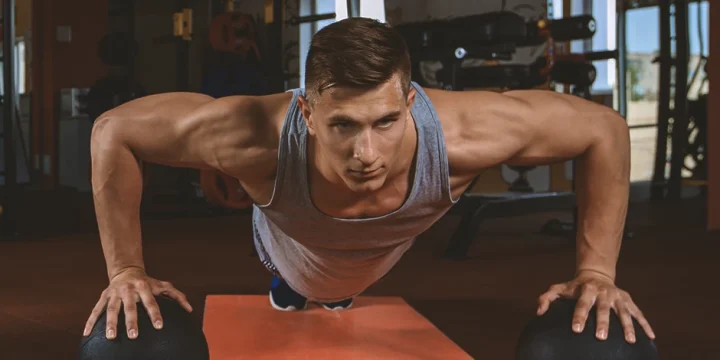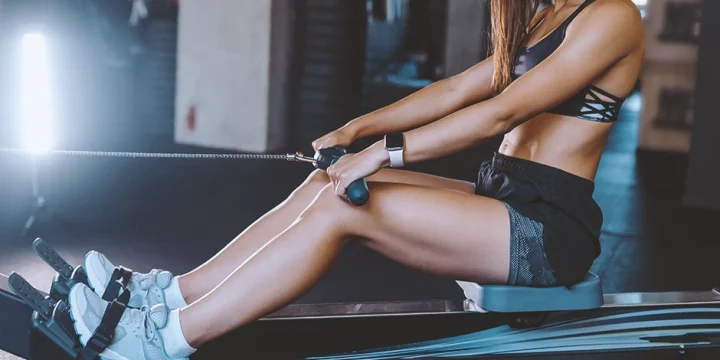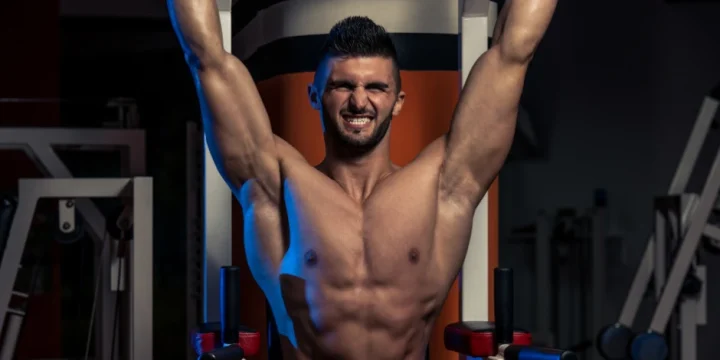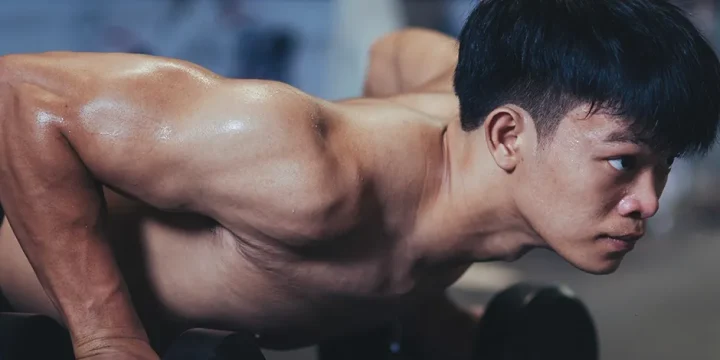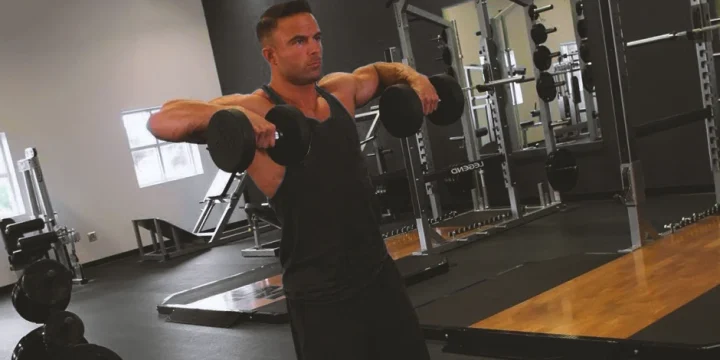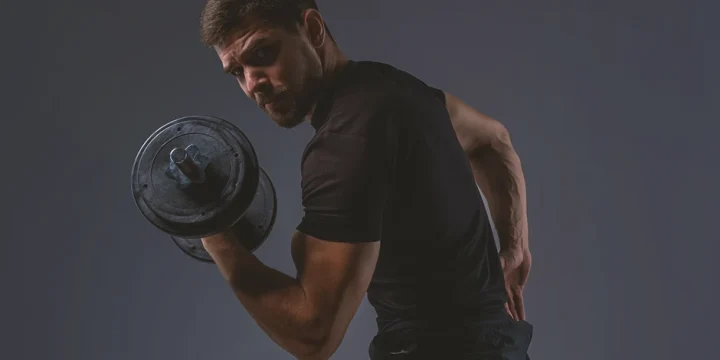As a certified fitness coach, I've guided and trained most of my clients to develop strong and muscular shoulders.
Even though the rear delts are involved in some back workouts, it is essential to train them in isolation.
Using cables is the ideal way to train your traps, but what workouts are best?
In this article, I will provide my research and expertise on the best rear delt exercises that'll give you that 3D look seen in most top-level physique competitors.
Quick Summary
- Enhancing the size and form of your rear deltoid muscles may help you attain rounder, fuller shoulders.
- Exercises involving external rotation, horizontal abduction, and extension must be performed to target the rear delt.
- Cable exercises provide your muscles with practically continuous time under tension, which, according to The Journal of Physiology, can aid in muscle growth.
- If you're an intermediate lifter, I recommend doing cable lifts, as they're more versatile than free weights and place greater tension on your rear delts.
Best Cable Rear Delt Exercises

After looking through data from hundreds of personalized shoulder routines that I created for my clients, I found these six rear delt exercises to be the most effective.
1. Standing Cable Rear Delt Fly
If you have lower back pain or wish to lessen the tension in your lower back, the standing cable rear delt fly is an excellent choice.
Many people use bodyweight rear delt exercises, but they are not as effective.
To perform this exercise:
- Place both cables slightly over your head and choose a sufficient weight. You may connect D-handles to both ends or grip the cord straight.
- Stand shoulder-width apart in the center of the pulleys, then take two steps back so the cables are somewhat in front of you.
- Stretch your arms and raise them to shoulder-blade level. Grab the left cable with your right hand and the right one with your left. Your hands and the cables should cross in front of you.
- Give your elbow a slight bend, tighten your core, breathe deeply, and look straight ahead.
- Begin pulling the wires by horizontally abducting the arms with your back delts.
- Pause for 1–2 seconds after feeling a significant tightness in your rear delt muscle, then gently return the cables to the starting position.
- Repeat for the required number of times.
2. Cable External Rotation
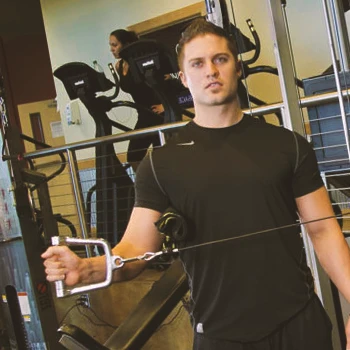
Cable external rotation is ideal for enhancing shoulder stability, health, and mobility.
External shoulder rotation is one of the primary functions of the rear delt.
Cables are undoubtedly the ideal equipment for acting since they provide steady tension, compared to dumbbell rear delt exercises.
To perform this exercise:
- Place the cable pulley at elbow height, connect a D-handle, and choose adequate weight.
- Take a shoulder-width stance perpendicular to the cabling stack. Grasp the handle with the farthest-away arm.
- Bend your arm to make a 90-degree angle with your elbow and lock it against the side of your body. Cross your forearm across your stomach. The cable should be under some tension. This is your starting position.
- Inhale, and begin the exercise by outwardly rotating your shoulder by pulling the wire away from your torso. Throughout, keep your elbow tucked into your side.
- Pause for 1–2 seconds once you've exhausted your external rotation capacity.
- Internally rotate your shoulder to resume the starting position.
- Repeat for the required number of repetitions.
Read More: Hip External Rotation Exercises for Injury Prevention
3. Cable Face Pull
This is another workout where the pulley's beginning height can be adjusted based on personal preference.
You'll want the handle to begin at chest height (upward angle) and move up to a little higher than slightly over the head (and pulling downwards to the body).
A little more elevated, it becomes a pulldown, while any lower becomes an upright row.
To perform this exercise:
- Place yourself in front of a cable station, with the pulleys set at chest level.
- Put a rope connection to the rope clip and grip its ends with both hands.
- As you grasp the ends of the ropes, keep your thumbs and palms turned down.
- Draw your elbows back towards your ears and let your hands separate as you bring the rope near your face (you ought to be pulling the edges away to allow the rope's center to go towards your face).
- Keep your elbows lifted and up towards your ears.
- When you've drawn the rope back far enough, pause to ensure your shoulders aren't rounded forward, then carefully extend your hands out in front of you to bring the weight to the starting position, and repeat for reps.
4. Seated Cable Row
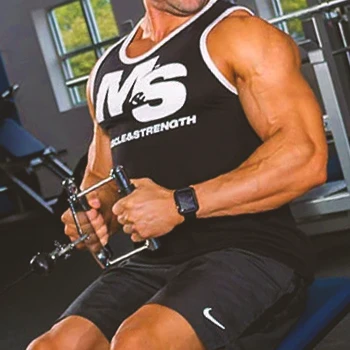
Sitting rows are a great lat workout that also trains your posterior deltoids.
You may make them particularly rear-delt-centric by using a broader grip and bringing the bar towards your chest rather than your abs.
To perform this exercise:
- Attach a long crossbar to the seated row machine.
- Take an overhand, wider-than-shoulder-width grip on the handle.
- Sit up straight, with slightly bent knees and core braced.
- Pull the shoulders back and down.
- Bend your arms and draw the bar into your chest, starting with your elbows and maintaining your wrists straight.
- Stretch your arms back to the starting position.
- Repeat for the desired number of reps.
5. Cable Upright Row
The cable upright row is a vertical pull activity that targets the back delts and traps. It is performed by lowering a cable and then pulling upwards, elevating the elbows towards the roof.
Contrary to popular belief or practice at the gym, the upright row doesn't require a large amount of weight.
Taking time, focusing on the correct technique, and maintaining continual muscular tension can result in healthy muscle growth with minimal load and shoulder joint tension.
To perform this exercise:
- Place yourself in front of a cable machine with the pulley at its lowest setting.
- Connect your preferred attachment, which, to comply with this instruction, will be a straight bar.
- With both hands slightly wider than shoulder width, grasp the bar with a double-pronated grip (palms down).
- Stand back a few inches from the cable pulley and stretch your arms out with the elbows slightly bent, and there's stress on the muscles and cables.
- Lift your elbows as high as possible with your torso up, ensuring that the elbows are higher than the wrists.
- You may even let the hands be pulled up to face height as long as the elbows are up.
- Pause at the peak of the rep before carefully lowering the weight, maintaining the elbows higher than the wrists at all times.
- Repeat for reps.
6. Cable Rear Drive
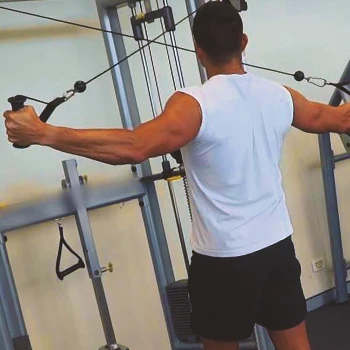
The cable rear drive is a workout that targets both the triceps and the rear deltoids.
When driving heavily with the cable rear drive, multiple muscle groups in your core and legs are significantly stimulated to stabilize your body.
To perform this exercise:
- Connect a rope to a cable pulley at shoulder height. Stand with your right side towards the cable pulley and hold the rope with your left hand.
- Take a step to the left now to create strain in the cable. Pull your elbow away and backward from the pulley so it faces the other direction.
- Stretch your arm to the left, keeping your arm straight and squeezing your Tricep. Exhale during this part of the exercise.
- Bring your arm back slowly and let your hand return to its starting position. During this part of the workout, inhale.
- Repeat for the desired amount of reps.
To reduce joint stress and preserve proper form, use low to moderate loads for this exercise.
Maintain your body's stillness. Your arm should be the only thing that moves.
Sets and Reps for Rear Deltoid Workouts
The rear delts, like any other muscle group, should be exercised using a range of exercises at various angles and intensities.
I recommend completing 3–4 sets of 8–12 repetitions with rear delt exercises for optimum results.
I'd also recommend starting with 1–2 workouts and gradually increasing to 3 for the greatest results.
Begin with a modest weight and concentrate on achieving a decent range of motion.
You can raise the weight and the number of reps as you gain strength.
Remember to preserve proper form and concentrate on contracting the rear delts throughout the exercise.
Deltoid Anatomy and Function

The deltoids are one of three primary muscles in your shoulders. Although the deltoids operate together, they may also be focused and trained separately. These are the three deltoid muscles.
1. Anterior Deltoid
The anterior deltoid, situated at the front of the shoulder, is in charge of shoulder flexion, horizontal flexion, and medial rotation [1].
All chest plus overhead pressing workouts engage the front deltoid. The anterior deltoid is the biggest and most developed of the three.
Read More: Best Front Delt Exercises
2. Medial Deltoid
This muscle, also called the lateral deltoid, is positioned on the side of the shoulder. Its principal function is to abduct the shoulder joint [2].
Bodybuilders target this muscle with workouts such as cable and rear delt dumbbell lateral lifts.
The medial deltoid is in charge of your shoulder breadth and V-taper.
3. Posterior Deltoid Muscle
The posterior deltoid, located on the rear of your shoulder, is in charge of shoulder extension, horizontal extension, and external rotation [3].
"The posterior deltoid helps in outwardly rotating your shoulders, like when you rotate the hands out to make the "I don't know" sign."
- Danielle Hildreth, Registered Nurse
While it is involved in most back workouts, bodybuilders often push rather than pull, which is why the posterior deltoid is frequently underdeveloped compared to the anterior deltoid.
Benefits of Training the Rear Delt

"The rear deltoids are the unheralded upper-body heroes. They give strength in rowing activities, aid in stability in pressing actions, and are significantly essential for the mid-to-upper back's lean, toned appearance."
- Amanda Dale, ACE Certified Personal Trainer
The rear delt cable workouts are an efficient approach to developing the rear delts. Let's explore more advantages of rear delts cable exercises.
- Enhanced delt physique: Big rear delts aid round out the shoulders, resulting in the boulder-shoulder appearance that most of you strive for, all while improving health and performance.
- Minimize joint stress: Rear delt fly cable workouts are an excellent option for individuals who have joint soreness when rowing. The cable alters the movement's angle enough to decrease the possible stress on joints.
- Better posture: Most individuals spend their day bent over their desktops with poor posture. Your shoulders may tighten up the upper body (back) and aid in correcting your posture by developing the rear delts.
- Reduce the likelihood of shoulder injury: Training the rear delts can aid in strengthening the shoulders and building muscle, minimizing your chance of rotator cuff muscle injury.
- Easier time under tension: Cable exercises provide your muscles with practically continuous time under tension, which, according to The Journal of Physiology, can aid in muscle growth [4].
FAQs
How Do You Train Rear Delts With a Cable Machine?
You train your rear delts with a cable machine by performing workouts such as cable upright row, cable face pull, and cable machine reverse rear delt fly, which targets the rear delts directly.
Do Cable Pulls Work Rear Delts?
Yes, cable pulls work the rear delts. Like most other compound exercises, cable pulls allow you to lift a lot more weight, exercising your rear delts even more.
Which Exercise Is Best for Rear Delt?
The best exercise for the rear delt is isolating and training the posterior deltoid muscles directly, such as cable face pull, cable bent over row, and seated cable rows.
References:
- https://www.ncbi.nlm.nih.gov/books/NBK537056/
- https://www.ncbi.nlm.nih.gov/pmc/articles/PMC3042752/
- https://pubmed.ncbi.nlm.nih.gov/24947920/
- https://physoc.onlinelibrary.wiley.com/doi/epdf/10.1113/jphysiol.2011.221200
About The Author
You May Also Like
